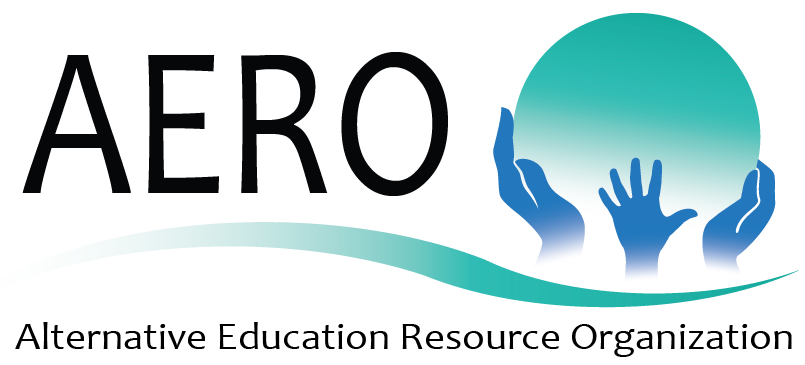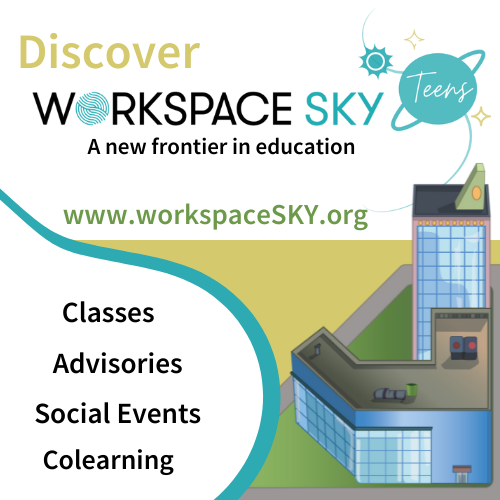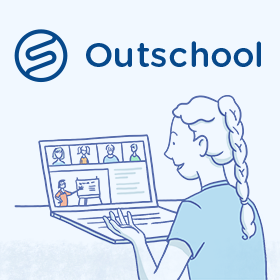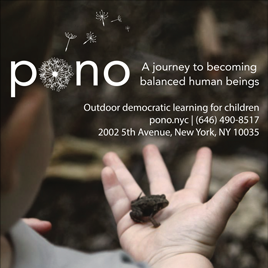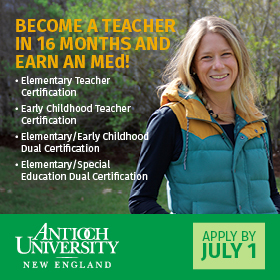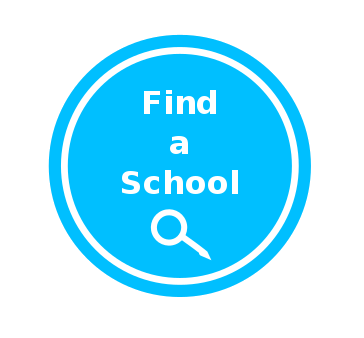Category: Community & Education Interview Series
WE HOLD THE KEYS TO THE FUTURE – AND SHOULD NOT BE AFRAID TO SAY SO
(A revised version of Derry Hannam’s keynote talk at the EUDEC conference held at Korfes, Crete, August 2018)
There are two pillars to Democratic Education.
Pillar number one consists of self-directed and self-managed learning and education which is free from coercion, competition, compulsory testing and fear of failure where above all young people learn to manage their own time. We aim to bring an end to meaningless schoolwork that is preparation for meaningless work. Much meaningless paid work in the wider world is coming to an end anyway which I am totally in favour of so long as we have democratic control of the consequences. We in the democratic education movement aim to create schools where children can think and choose for themselves and no longer produce obedient factory workers and soldiers. Though having said this in my opinion we need to extend our educational vision into a wider political and socio-economic vision then we currently do. This first pillar I think of as Student Participation in Decision Making or SPDM.
Pillar number two, which is equally important for the future of sustainable societies on our planet, is democratic process grounded in respect for human rights. A process in which every member of the school community has an equal vote or opportunity to participate in decision making. A process where disputes are resolved through some form of judicial committee or restorative justice system. I call this second pillar Student Participation in Democratic Decision Making or SPDDM.
Then there are two parts to our task.
First we need to continue to develop and support fully democratic schools and learning centres that are “Pioneers of Possibility”. Places that go a long way fast. Places that will often be small and privately owned. Though this will not always be the case for in Denmark for example it is still possible for a group of parents to get state funding for a democratic school. Israel is now providing state funding for democratic schools such as Hadera School pioneered by Yaacov Hecht who spoke to us earlier in this conference. There are whispers that a little-known government fund in the Netherlands that exists to fund otherwise unfundable projects might soon be funding the strong network of Dutch democratic schools. These pioneers of possibility need to stay within the law of our nation states, even though at times this can be difficult and we may have to defend ourselves from the law on occasion. We have had some success in this regard such as the famous Summerhill case in England where an aggressive inspectorate was defeated in court. In the Netherlands the initial hostility of the Dutch inspectorate to the Sudbury model led to the closure of De Kampanje School but, after much struggle and negotiation, it has been resurrected in the form of the New School at Harderwijk which is now used to train those self same inspectors. Sadly there is a darker side to this picture such as the closure of the highly successful Amersee Sudbury School confirmed by the Bavarian court this week. I love the story told by the Bulgarian group at this conference where the minister of education is reported to have said that “…everything that you propose is illegal – but do it anyway.” Funny but not without risk!
The second part of our work is crucially important and easy to neglect when we come together to enjoy each other’s company – namely to never give up on the struggle to change our state public school systems. Here we will probably not be able to bring about great change overnight but will need to work incrementally in achievable smaller steps. Not giving up when two steps forward seem to be followed by one and a half steps back. Why? Because it is where most of the kids are!
Some European systems are already better and more amenable to democratic change than others. Finland, where the school students themselves have created a Demokrati I Skolen project jointly with the education ministry, and the other Nordic countries may be the most potentially democratic. Even Sweden which is currently recovering from its socially catastrophic neo-liberal experiment is producing a literature supportive of more school democracy. More typically the school system in my country England (we have four different education systems in the UK) and yours in Greece are probably amongst the worst and most resistant to change. In England the high stakes testing industry has ‘occupied’ our school system and we have an exponential increase in mental health problems and self-harm incidents among school students that justifies the use of the term epidemic. The figures increase when the schools are open and decrease during the holidays. We are about to commence the testing of 4 year-olds if the government can find a testing company corrupt enough to do it. The evidence of ALL early years research shows this to be predictively useless as far as future school success is concerned while it is certainly damaging to the self confidence and well being of the children. So we have nursery schools dividing children into ‘fast tables’, ‘average tables’, and ‘slow tables.’ That of course will have a predictive effect on the future of those children, especially those sat at the ‘slow table.’ Meanwhile, creativity and the arts are being driven out of the state curriculum by the STEM (Science, Technology and Mathematics) subjects. The good news is that there is a growing resistance from parents at what they see being done to their children.
Maybe I could mention here the “20% Campaign” which Yaacov and I launched at the World Forum for Democracy through Education in Strasbourg in 2016. The idea is simply that all state schools everywhere should allocate twenty percent of curriculum time, or one day per week, to be negotiated around the interests and enthusiasms of the students, and perhaps also the staff. Nearly all the 2200 delegates at the Forum voted for the idea and some of those who did not said it was because “…twenty percent is not enough!”
I recently wrote an article for Democracy Day in England in which I argued that young people needed time to think, time to find themselves and discover their passions, and that currently most state schools do not allow this. In fact they even follow the students home with more and more homework. The “20% Campaign” represents a ‘Universal Basic Income of Time’ for school students if you will! – and of course the 20% is just a start. The idea was not just well received by the Forum participants but it has been taken seriously by teacher union representatives that I have discussed it with – though not yet by politicians, which is my next step in England. I know it can work. I have done it in the school where I was a deputy headteacher and I have seen it work in other schools when I was an inspector. It sounds like a perfectly reasonable idea as after all it leaves the state still controlling the other 80% of curriculum time yet its implications can be revolutionary as it changes the relationship between staff and students from an authoritarian to a negotiated one.
We have to devise as many such ‘reasonable’ demands as we can and be prepared to argue our case in the national educational press. We need to push to gain access to policy makers. This can be done and I will give an example later in this talk.
Looking back on my time as a state school teacher I sometimes ask myself ‘Why Did I Bother’ with this struggle for school democracy. Here are some of my answers –
- Children’s Rights – though I was working before the UN Convention on the Rights of the Child existed
- Jerome Bruner’s three ‘C’s describing the nature of the young human animal – Curiosity, Collaboration, Competence
- And my own belief supported by psychologists such as Lawrence Kohlberg and now our own Peter Gray that many important things can only be learned experientially such as Morality, Responsibility, Human Rights, Democracy, Justice and the Rule of Law, Social and Economic Entrepreneurialism, Human Relationships that are based on trust and mutual respect, – and above all perhaps how to find and follow your own deepest interests and passions in order to create your own identity rather than being dependent on others for it.
My own experience of school was like that described by Yaacov in his talk. “Why are you only interested in what I can’t do but not in what I can do and in what interests me?” Though, unlike Yaacov, I could pass their tests but I just found them tedious and pointless.
My first experience of a democratic institution was a therapeutic community in a psychiatric hospital in the 1960’s in Oxford. You can figure out for yourselves whether I was staff or patient! The treatment was living together in a democratic community rather than pharmaceutical, electrical or surgical. I have no time to go into detail but it worked.
If it can work in a psychiatric hospital then why not a school I thought. So I decided to train to be a teacher. This was not so simple and as a student I had many arguments with my instructors, not least in psychology which was all behaviorism and behaviour management. “I want to work with children not Skinner’s rats or Pavlov’s salivating dogs,” I said and was more or less thrown off the course. In exchange for not questioning lecturers I was permitted to use the library for private study where I discovered a gold mine of unread dust-covered books by John Dewey, Tolstoy, Montessori, Pestalozzi, Bertrand Russell, Homer Lane and most wonderfully A.S. Neill. Time to follow my own interests was the key. Once during my teacher training I drove past Summerhill School by chance but was afraid to enter the ‘Holy Shrine.’ That is no longer the case!
I managed to do crazy democratic ‘Summerhillian’ things on my teaching practices as a student. Two, in primary schools, were highly successful and one in a secondary school was a catastrophe where once again I was nearly thrown out for ‘allowing’ the school students to talk about their feelings towards school in a history of democracy class.
As a young teacher I had a truly wonderful first job. I was able to create a democratic class with 35 kids who had just failed the high-stakes 11-plus test which decided whether 10% would be selected for university entrance geared grammar schools. Instead of being fired, as I half expected, the support from parents who saw the self-confidence of their children recover was so great that I was put in charge of all 7 classes in the grade – 240 kids – in the following year. We controlled 60% of the curriculum as traditional English, history, geography, social studies and religious education was rolled up into integrated humanities. It was really possible to follow both pillars of democratic education. Kids studied whatever interested them in a context of democratic process. I called it a ‘democratic learning community’ and have just finished a book about these two years. I am still in touch with some of the ‘kids’ in that first class – now 56 years old and coming up to retirement – and they have contributed their memories to the book. Some define the democratic experience as life defining though it was only from the ages of 11 to 13.
I do not have time to go into much detail about this class but I will just mention a couple of anecdotes. Firstly as a demonstration of democratic competence one of the ‘kids’ who has contributed to the book was class chairperson when a group of visiting teachers came to the class. I was not in the room but the class was busy with its projects without any sign of the teacher. The visitors, with the head teacher, asked what was going on. Andrew explained ‘Well you see our teacher Mr Hannam is a bit soft and so we have our own self-government. If we didn’t it would be chaos in here.’ He remembers this incident and is very embarrassed about it whereas I love it as it encapsulates what I was trying to achieve. On another occasion we were visited by a reporter from a national newspaper. One normally well behaved boy called Ian broke every class law in the days before the visit. I wondered why. I got my answer when the press photographer took pictures of the class court in action and of course the chief offender was Ian. It was his picture that got into the paper the next day!
Not everything went smoothly of course. As a new young teacher I was not very good at explaining my democratic methods to more traditional teachers and on one occasion the class used its ‘quiet time’ law in the lesson of a maths teacher who regularly shouted at them. Because they were having a self-imposed quiet time they refused to explain to her why the room had gone quiet. This led to me being reprimanded by the teachers’ union for undermining another teacher’s discipline even though I had told the class to only use the democratic class laws in my lessons.
Sometimes I was amazed by the moral sense that developed in these young people when given some power and responsibility to run their own affairs. There was a deeply moving event when a troubled Roma girl, let’s call her Pauline, was put into my class. She befriended some older also troubled girls and they began to bully and steal from other children – though never from anyone in our class which had a class court that they knew would not be afraid to oppose them. A point came when she was about to be excluded from the school. Without my prior knowledge our class met after school one day to decide what could be done to help her. They decided to elect her to be both class chairperson and a class magistrate. She was moved to tears and never stole again.
In retrospect it was great fun and the kids learned a lot. Several eventually went to university although this was theoretically very unlikely for ’11 plus failures.’
After two years in that school I was head hunted to be Head of Department in a newly built school of 2000 students nearby. It was possible to introduce democratic methods on a wider scale. For example students would take over parts of the curriculum in examination classes which they would research and teach to the rest of the class. Each student was given part of the library budget which they could spend alone or combine with others to buy a more expensive book or books. This being 1973 there was little knowledge of or interest in computers but one boy, Nick, ordered two computer books which he read over and over again. A few years ago he appeared on my doorstep as a man in his late forties – now CEO and owner of a large and highly successful software company in Bristol.
In my third school I was at first in charge of a democratic ‘House’ of 180 kids aged 11-18. We set up a house council and a house court. We reorganized the house building. House assemblies were democratic affairs where major decisions were made directed by the house council. The house teachers were both tutors of groups of mixed ages who to some extent chose their own tutor. Wherever possible these teachers taught different subjects to house classes with an emphasis on choice of topic and democratic class management. Later I became Deputy Director and Acting Director of this school and with the help of older students turned it into a Community School. We opened the school to the local community, a small country town in the English Midlands, and in turn the organizations, clubs and societies of the community opened themselves to the school. Adults began to attend some school classes and students became interns in the town. We set up the first Community Education Council, always chaired by an older student, to manage everything. This was followed by combined school/town projects like a Community Newspaper edited by adults and students and a magnificent all-age Community Orchestra with 80 players. With adults in classes it became absurd for the young people to have to wear school uniform – so we abolished it. This was in 1978. Three years ago I revisited the school and found that with the full support of the parents and the town it was still the only secondary school in this part of England to have no school uniform, that the school had a waiting list for places, and that the Community Education Council was still going strong.
I then became a school inspector. Possibly a mistake as I came to dislike much of what I saw and much of what I had to do. Occasionally I was able to support and encourage head teachers who were trying to fight the waves of centralised curriculum and testing that were beginning to corrupt the system or individual class teachers who were trying to be child-centred or democratic in a small way. When I found a school that was allocating 10% of time to student led elective activities I was able to say ‘well-done’ rather than ‘you’re fired.’ And then after 250 inspections I discovered why I had become an inspector. The government tried to close Summerhill School in 1999 – one of only two fully democratic schools in the UK. The principal Zoe Readhead, daughter of A.S. Neill, and by now a good friend asked me if I could work for the school against the hostile inspectorate. I did and we won the ensuing court case – though I must emphasise not just because of me!! Many many people came to the aid of the iconic school and as well as advising the legal team somewhat secretly I was also proud to be part of a high-powered and very effective ‘alternative inspection team’ put together by another friend Ian Cunningham from the Centre for Self-Managed Learning. I am no longer afraid to go into the ‘Holy Shrine’ when I drive past as I had been thirty years before!
I would now like to come back to a story that is an example of how sometimes it is possible to change policy at national level if we are sufficiently opportunistic. In the 1990’s and early 2000’s I had been working on numerous Council of Europe projects to introduce ideas for democratic methodology to teachers, often from the ex-communist countries and often with the help of teachers from the Nordic countries. I was involved in the launch of the EDC/HRE (Education for Democratic Citizenship/Human Rights Education) project). I was also running courses on school democracy for OBESSU (Organising Bureau of European School Student Unions) and involved in research into the curriculum reforms in Norway known as Reform 94 and Reform 97 which introduced more democratic processes into primary and secondary schools. In addition I was advising the students in Finland who were planning the Demokrati I Skolan project.
This was the moment of the electoral success of the Labour Party in the UK which led to the Blair government. The new minister of education was David Blunkett who knew that England was one of the few countries in the world to have no citizenship curriculum. He turned to his old university teacher Bernard Crick to be his adviser and by a series of coincidences I became one of Crick’s semi-official advisers because of my growing European experience. I brought one simple idea to the role. ‘If teachers just talk to students about democracy it goes in one ear and out of the other. It has to be practised in the everyday life of the school to be of any value. Otherwise it is like reading holiday brochures in prison.’ Crick bought the idea from me and Blunkett bought it from him. When the law introducing the new curriculum was created it included a requirement that all students in state funded English secondary schools should have the opportunity to ‘participate in democratic decision making and in responsible action.’ When the chief inspector heard of this, the same one who attacked Summerhill, he claimed in the right-wing press that this requirement would reduce the time for maths and thus would reduce ‘academic standards.’ The minister wobbled and I was asked if I had any evidence that schools that were already quite democratic had results that were at least as good as those that were not at all democratic. I only had anecdotes so I was given a fairly large sum of money and told to see what I could find – by yesterday!!
I found 20 schools in all kinds of socio-economic environments that were significantly ‘more democratic than most’ and compared their examination results, attendance figures and exclusion rates with the average for all other English state secondary schools in similar environments. In every case the results for the ‘more than usually democratic schools’ were better than the average. This became known as the ‘Hannam Report’ and is available online in several languages. The minister was able to say to his critics ‘I have some evidence that you are wrong – do you have any to support your view?’ They didn’t and the democratic participation requirement passed into law – until it was removed in 2010 by an incoming conservative government. However during that ten years thousands of English secondary students had an experience of democratic decision making and action that they might not otherwise have had. For me it was worth the effort. Additionally the Report has made it into the final 30 studies (of 3200) of student participation research published by the University of Innsbruck meta-review of Nowak and Mager in 2012. google tells me that it has been cited in about 80 other studies before and since – so – not a complete waste of time even though I am not a professional researcher but just an enthusiast with a modest M.Phil. The Democratic Citizenship Education experiment in England has led to other research, mainly in state schools, that supports our convictions though we need much more of it! Overall I think it can be said that grabbing an opportunity led to meaningful policy change even though It has not survived a change of government. Nothing lasts forever.
It is very pleasing to see our movement beginning to build its own research base such as the doctoral work of Charlie Moreno and the proposals of Freya Aquarone both here at this conference.
But now I come to my main point in this talk. (Thank God, at last, do I hear you say??)
There is a growing awareness that the nineteenth century industrial/factory model of education is not good enough to cope with the floods of change that are already washing around us. Finland, Canada, Singapore and a few others are already doing something about it, but more widely creativity, innovation, smart communication and digital skills are not being developed or even valued in our schools. In fact unusual talent is sometimes being labelled and medicalised as attention deficit disorder or ADHD or other ‘on the autistic spectrum’ conditions. They are given medication such as the soon to be ubiquitous Ritalin and only 14% ever gain employment. At the same time the UK electronic spy agency GCHQ has released figures showing that 120 of its most brilliant cyber defence employees have had precisely these labels when they were at school but by good luck and serendipity have found their way to an employer that understands and values them.
The most common response of UK politicians is “OK the current 150 year-old industrial model of education is not working – so – let’s have more of it!!” “Let’s re-arrange the deckchairs on the Titanic!!” But the ship is sinking. The CEO of IBM said in a recent panel discussion at the World Economic Forum at Davos “It is a waste of time setting young people tests that could easily be answered by computers – they should be learning to do things that computers can’t do.”
So we come to the Fourth Industrial Revolution and what democratic education has to say to it.
The First Industrial Revolution was based on steam and iron. It created the first industrial cities at the turn of the 18th and 19th centuries. It led to rapid changes in production and distribution through railways and shipping together with a vast increase in capitalist wealth. The Second Industrial Revolution came at the end of the 19th century with electricity, oil and steel replacing coal, steam and iron leading to the internal combustion engine and powered flight. The third brought the power of digitalisation in the second half of the 20th century. I have heard Alan Turing’s breaking of the Enigma Code described as the key event leading to personal computers and the internet, the effects of which are still washing over us.
But we are facing a veritable tsunami of change as the Fourth Industrial Revolution reveals its emerging power. Klaus Schwab, the creator of the World Economic Forum, only invented the term in 2016 yet Google shows 36 million results for a search today and there is a very large and rapidly growing literature already.
Some of you, mainly under 30 probably, will know and understand more than me about Blockchain and its rivalry with Holochain, Crypto-currency Wallets and Bitcoin (how many of you have one or can tell me who Satoshi Nakamoto is? That is a trick question!!), Machine Learning, Robotics, Nanotechnology, The Internet of Things, Artificial Intelligence and Technological Singularity (the day that robots become more intelligent than the collective intelligence of human beings – maybe 2035 or sooner?), 3D Printing, Autonomous Vehicles or Drone Delivery, the Turing Test.
Schwab says these new and enormously disruptive technologies could enormously expand the numbers of people connected to the worldwide web and that this in turn could massively improve the efficiency of business, of production and distribution. He believes they could even regenerate the natural environment through better use of resources. But – he says less about the increase in the accumulation of wealth by the already super-rich and the potential impoverishment of millions as paid labour declines or disappears. I have seen many figures for this and some optimistic economic historians argue that every industrial revolution leads to the loss of some redundant jobs but that this is always counterbalanced by the creation of new ones. Most serious students of what is beginning to happen now predict that the Fourth Industrial Revolution will be disruptive on a wholly new scale. They talk of anything between 18% unemployment (OECD) to 54% (latest Oxford study) with 33% of men between the ages of 25-54 being out of full-time paid employment by 2030. The Hi-tech industries, the silicon valleys of the world, will need only 1-2% of us to be highly qualified to maintain and develop the new system and even they are more interested in creative aptitude than qualifications and examination scores. The rest of us will probably need no more than GCSEs or high school diplomas.
Uber has already ordered thousands of driverless cars. Deliveroo riders will soon be replaced by drones. Paid labour is declining as digitalisation, automation and robotics proliferate. Careers are no longer lifelong. Wages have been falling for many together with growing job insecurity in the ‘gig economy.’ At the same time inequality of wealth is rapdly increasing as we see the rapid exponential rise of the ‘precariat.’ (Those whose paid work is without benefits such as paid holidays, sick pay, pension and is in every way precarious.) Their jobs will be the first to go – and they vote for Trump or Brexit.
We know from the work of epidemiologists such as Wilkinson and Pickett that gross inequality of wealth produces ill-health and social instability for all. Thomas Pikketty in his encyclopaedic ‘Capitalism in the 21st Century’ argues for taxation on an international scale. I sometimes feel that the rich liars who sold Brexit to the British people are motivated by fear of the EU at last beginning to close in on their tax havens. We have tried austerity and harsh welfare reforms in the UK. It has been a disaster just as your Yanis Varoufakis said it would be. We know that societies moving rapidly in this direction are not happy places – the world has Trump, the British have Brexit, and Europe has Hungary, Poland, Austria and now Italy. Who knows what Brazil will add to the cocktail. More walls, nationalism, xenophobia and racism.
But Varoufakis is also an optimist. He says “I have a very deep respect in the capacity of human minds to work things out for themselves – so long as they do not have to live in terror.” Sounds to me like a pretty good justification for emocratic education.
If governments can find a minimum of rationality, which I pleased to see growing in the English opposition Labour Party led by Jeremy Corbyn, they will turn to Universal Basic Income to achieve some kind of social stability as paid employment disappears. All around the world there are a growing number of pilot schemes for Universal Basic Income (UBI) , some supported by wealthy silicon valley entrepreneurs such as Sam Altman of Combinator. These show that wealth, if regarded as a kind of commons that has been created by past generations rather than by hedge funds, can be shared as a basic income for all. When this happens there is a widespread feeling of equity, social justice and well being, a reduction in economic insecurity, and a growth in social, political and economic entrepreneurial activism. All aspects of a good society.
After all it is well known that much of the wealth of the super rich has actually come from publicly funded research. It is only right that some of it should be shared unconditionally to provide basic income for all humanity as of right. This could at last set people free with the time to pursue activities of their own choice. Unemployment from paid labour would no longer be a self-diminishing curse but an opportunity – to start a society, to become active in a political group, or to play music or paint pictures – as one of my own sons has done. After years of struggle his paintings are now selling well and he is paying a lot of tax. Something the mega-rich need to be prepared to so.
But – for Universal Basic Income to work people will have to be able to take responsibility for their own lives and be able to create their own identity and meaning. They will have to stop relying on employers and paid employment to define their identity. Secure paid labour that will last unchanged for many years no longer exists for the majority of people.
People will have to be able to redefine work as what they want to do with their lives. To do what they are good at. To create community with others who also know how to manage their own time. People who can reflect and participate as active citizens in democracies, both local and direct and regional or national and indirect or representative. All with a deep understanding of human rights and respect for diversity.
These democracies will be under threat from demagogues like Trump and Putin. They will have easy answers as to who is to blame for the uncertainties that surround us – the Roma, the Jews, the immigrants, the homeless, the disabled etc etc. To resist their nostrums and snake-oil we will need a young generation deeply grounded and experienced in respect for democracy and human rights,
Well – I ask you – what kind of schools already exist that know how to nurture such young people, to provide the soil for such people to grow. What kind of schools are going to be needed for all young people if the planet is to have a future. Exactly!! The bi-pillared democratic schools. Schools where young people are learning to construct their own identities, where they can make time their own to discover and deepen their interests and celebrate their creativity and curiosity while developing competences that are meaningful to them – who do not rely on others to instruct them and tell them what to do and when to do it. This is for sure where the 1-2% needed to create and develop the technology of the Fourth Industrial Revolution will be found. If they have been to democratic schools they will have the ethical and rights based values to support their work in a sustainably viable way.
But what about the other 98%? For them it will be even more important that they have learned to collaborate in democratic rights respecting schools where they can develop the will, understanding and determination to ensure that this new wave of technology benefits and liberates humanity and not destroy us all. To ensure that it is subject to the democratic control of people who have the time and the capacity to think for themselves.
If we don’t change our schools there is a real danger of insurrection as millions find themselves ill-equipped to deal with the new uncertainties despite the best efforts of those advocating a gift economy, or a sharing economy, or a circular economy – all of which I approve. Here are some dystopian thoughts. In the US there are some 3.5 million truck drivers. They are a well-paid working class elite most of whom own guns. Over the next 5-10 years much of their work will disappear as trucks become automated self-driving vehicles. Who will Trump and his ilk tell them to blame? This will happen in many occupations. Already computers make more accurate diagnoses than most medical doctors because they can review so many case histories so quickly. When secure crypto-currencies replace banking where will the millions of bank clerks go – and where will the Uber drivers go when taxis are driverless. If we are not careful we will fall victim to what Darrell West calls ‘Trumpism on steroids.’
It seems to me that as a revolutionary democratic schools movement we can either retreat into the woods with our small happy schools and hope that the ‘real world’ will forget about us and go away. We can take up ‘folk politics’ leaving the woods from time to time to occupy Times Square until we get bored and go home having changed nothing. We can become ‘survivalists’ without guns.
Or we can say welcome to a world where much meaningless paid labour will end and become much more willing to engage with the public and the public school systems, the media, mainstream politicians and policy makers to explain to them what kind of social policies such as UBI will required for a sustainable democratic world to emerge and survive. And surely it is our special task to be willing to explain what kind of schools will be required for all our children to be able to thrive in that world. We need to stop being so shy about the fact THAT THESE SCHOOLS ALREADY EXIST!
The neo-liberals planned their successful bid for world hegemony for their ideas very carefully. It was no accident that they overwhelmed Keynesianism in a decade. I think we need to do the same – to make the same effort – building on the proven success of our small scale democratic school models, We need to make the case for the democratisation of our public state school systems. We need to imagine short, medium, and long term goals as the neo-liberals did. We need to ask ‘what would a national democratic school system look like?’ We have an opportunity to align ourselves with the Council of Europe’s ‘Democratic Schools for All’ project – which EUDEC has begun to do and hopefully at least one of our schools will attend the Oslo conference in November with progressive state schools from around Europe. EUDEC has a real role to play in this challenge to communicate. It has been exciting and encouraging that EUDEC was invited to join the advisory board of a major academic project involving 15 universities and 15 NGOs led by the University of the Basque Country this year. It is the ‘To Share’ project which would involve collating and reviewing projects from around Europe which are already beginning to address the challenges of the Fourth Industrial Revolution. It would then recommend policies by which democratic politics could get some control over the technology involved. EUDEC was identified by the ‘To Share’ coordinators as an organisation with something unique to say. Sadly the EU did not fund the project this year but there will be another application next year and hopefully EUDEC will maintain its commitment to the idea.
So – others are beginning to recognise the importance of our existence and our message. Let’s amplify our voices a bit more to ensure that we communicate more effectively. In this ‘age of disruption’ let’s think hard about how we can ‘disrupt’ our national school systems. Most of them desperately need it!
Thanks for a wonderful conference.
Derry Hannam
News From People Responding to Membership Renewal AERO Membership Discount for 2 Days
From Ken Danford, North Star and Liberated Learners
“We are pretty busy with Liberated Learners these days. We have about a dozen centers in the network, and one opening in Dover, NH, called BigFish. There are a few more in the planning stages.
- Bucks Learning Cooperative – Langhorne, PA
- Princeton Learning Cooperative – Princeton, NJ
- Raritan Learning Cooperative – Flemington, NJ
-
- Bay State Learning Center – Dedham, MA”
The Western Institute for Social Research (“WISeR”) by John Bilorusky, PhD, WISR President
In 1975, the Western Institute for Social Research (WISR) was founded in part as an attempt to improve on both conventional and alternative higher education as they had evolved into the 1970s. At that time, many educators and students were debating the merits of the university’s role in the community and in social change, and the “relevance” of the curriculum to each individual student. After 43 years, and given growing income inequality, continued racial injustice, threats to our democracy, and the intensified and narrowing pressures to use education only for career advancement, WISR’s mission and learning methods are more needed and important than ever.[ www.wisr.edu/welcome ]
- WISR combines theory and practice. All students do active reading, writing, thinking, and discussing while they continue wrestling with specific, practical problems, with the guidance and support of faculty and their fellow students.
- WISR is intensive and individual. Each student builds, and continually revises, a personal learning plan and works with faculty, other students, and community resource people, on the problems s/he deeply cares about.
- WISR is a small, multicultural learning community. WISR is designed as a living experiment in cooperation among people of different races, cultures, and personal backgrounds. Active collaboration with others, not competition and distance, lend richness and interest to each person’s learning process.
- WISR is inquiry-oriented. Learning at WISR builds on the excitement of actively doing one’s own research, growing out of action, experience and observation, and dialogue with others. We aid and support one another to use curiosity, imagination, and critical mindedness, while probing for insights beneath the surface of everyday impressions, and searching for the interconnections between our immediate experiences and the “bigger picture.”
- WISR focuses on professional study that is also mindful of personal growth and values, along with developing leadership skills for community and/or professional transformation.
- WISR is dedicated to social change. WISR students and faculty are people committed to changing today’s oppressive patterns of race and gender relations, of wealth and poverty, of extreme power and powerlessness, in peaceful and constructive ways.
- WISR offers distance learning to all students, as well as the option to meet with faculty and students on site, in advising sessions, seminars, study groups and conferences. All seminars, study groups and conferences are available to students both on site and from a distance by internet and phone access to video and audio conferences with those on site.
- Most importantly, WISR helps students to build bridges to fulfill their plans for the future. We believe it is important to consciously and continually help students to design learning activities—action projects, research, and writings—that help to build bridges to the student’s desired career and life paths, and oftentimes this includes working toward a more sustainable and just future. We believe that people should not have their visions limited by the definitions of existing jobs and careers, and that they can, and should, be encouraged to be both visionary and realistic in pursuing a life path that makes sense to them. Consequently, WISR’s educational programs are suited for learners with many different types of future goals, including but not limited to: changing careers, pursuing advancement in one’s existing career, becoming more capable and more meaningfully engaged in one’s existing job or career niche, writing books and articles, organizing people and networks for social change, or creating new organizations and programs.
Chris Mercogliano: 20 Characteristics of a Good Teacher
All good teachers:
1. Genuinely like children and enjoy being around them. Just like parents with their own kids, they take pleasure and pride in their students’ growth and development.
2. Genuinely enjoy teaching, too. This is a critical factor because teaching is essentially a modeling process and students learn much more readily when their teachers exhibit joy in what they’re doing. And as a result, good teachers feel energized at the end of the day, not drained.
3. Are openhearted. They care about their students’ lives, present and future, and they address their students’ shortcomings and transgressions compassionately, not judgmentally.
4. Recognize that teaching isn’t something they do to or for children; rather it’s a reciprocal exchange of energy within a relationship. Good teachers also realize they are continually learning from their students too.
5. Trust in the innate wisdom of the learning process and in their students’ intrinsic desire to learn. They don’t try to force learning to happen by resorting to extrinsic motivators like rewards and punishments.
6. Are authoritative, not authoritarian. Authoritarian teachers are highly controlling,consider their authority non-negotiable, and maintain their control with punitive discipline. They feel threatened by a child’s expressions of independence and individuality. Authoritative adults set firm, consistent limits on out-of-bounds behavior, but don’t hem students in with restrictions. They maintain their natural adult authority while at the same time respecting the child’s point of view and encouraging verbal give and take. As their students grow more responsible, they extend them increasing levels of independence.
7. Understand the fundamental role that emotions play in a child’s complete development. They are emotionally self-aware and make sure the environment is welcoming and safe so that their students feel comfortable being themselves and don’t feel they have to hide their vulnerabilities.
8. Continue to work on their own personal and professional development, because as Joseph Chilton Pearce once said, “Teachers teach who they are.” Good teachers realize they can’t guide their students to places they haven’t already been themselves.
9. Are facilitators of learning, not taskmasters. “Facilitate” literally means “to make easier,” and the most fundamental purpose of teaching is to help the student learn how to learn with ease and efficiency.
10. Acknowledge the individuality of their students and don’t expect them all to be interested in the same things at the same time, or to learn in the same way.
11. Assume it’s their responsibility to present things in a way that every individual learner can understand, and not the learner’s job to adapt to the teacher’s methods. Good teachers continue to try different approaches until they find the key that unlocks the door to the learner’s understanding.
12. Are good communicators. They speak clearly, with honesty and respect; and they make sure that their criticism is constructive and always based on “I” messages. And then they listen carefully to what their students have to say, encourage them to speak freely, and value their opinions.
13. Understand that learning doesn’t happen under duress. They make sure that anxiety and stress have no place in the learning environment.
14. Are flexible. Aware that a lot of important learning is serendipitous and synchronistic, they are able to shift gears quickly in order to stay in synch with their students’ shifting moods and interests.
15. Know how important it is for children to take responsibility for their own education and their own actions, and so they share initiative, power, and control with them.
16. Respect a child’s inalienable right to say “no.” They don’t force their students to do things they aren’t ready or willing to do.
17. Build strong relationships with each and every student. They also facilitate students doing the same with one another.
18. Recognize the deep developmental value of play. They provide ample free play opportunities for their students, and they also make sure there’s enough play in their own lives because they know how much play re-energizes and restores them.
19. Understand that experience is the best teacher. They minimize the amount of instruction they do by creating a rich, resource-filled environment—with abundant connections to the outside world—that enables students to learn by doing and discovering.
20. Consider teaching to be a calling. They view their work as an authentic sharing of themselves and a way to make the world a better place, not a professional role that confers them status and a paycheck.
